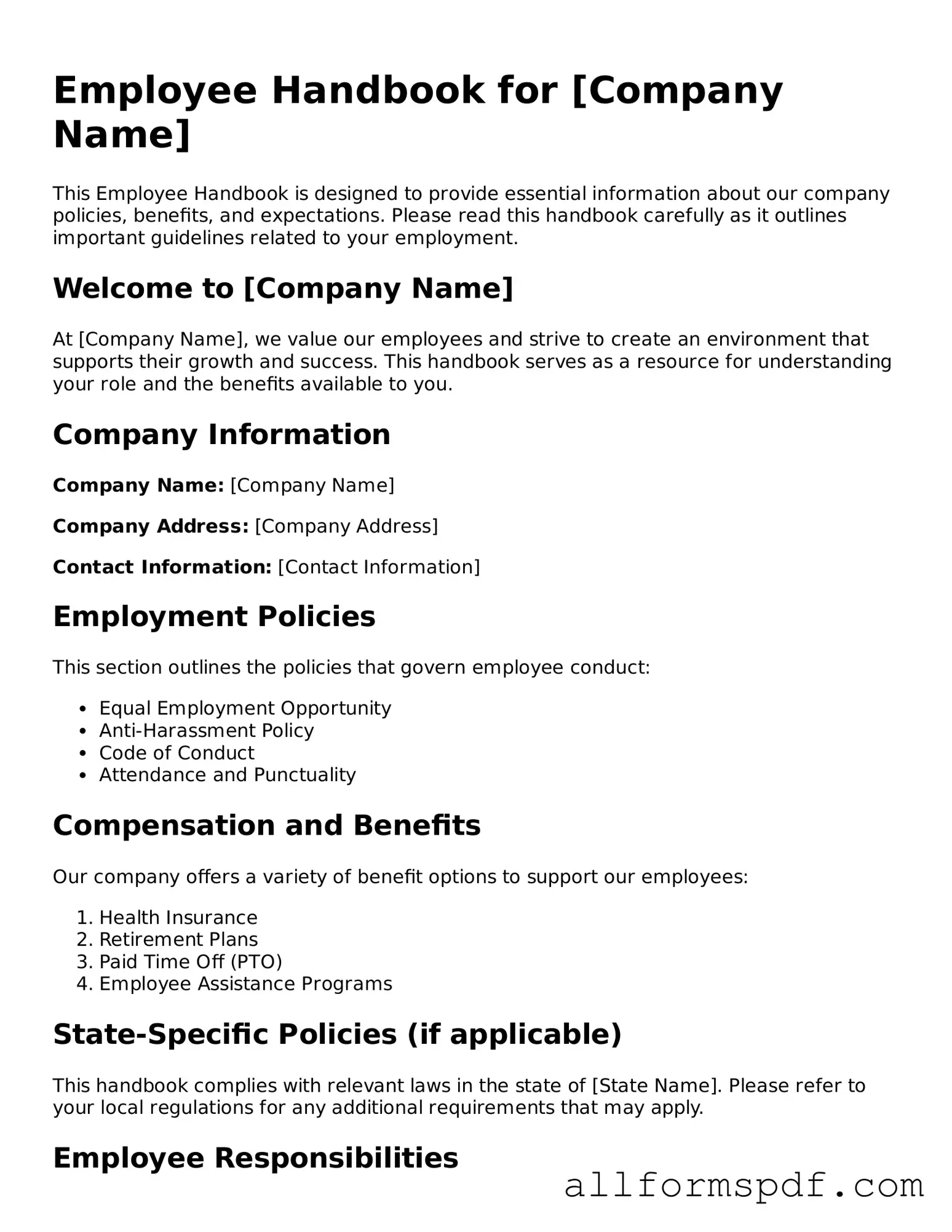Filling out the Employee Handbook form can seem straightforward, but many individuals make common mistakes that can lead to confusion later on. One frequent error is not reading the instructions carefully. Each section of the form has specific requirements, and overlooking these can result in incomplete or incorrect submissions.
Another mistake is providing inaccurate personal information. Employees sometimes rush through this section, which can lead to misspellings or incorrect addresses. This can create issues for communication and benefits administration.
Some individuals fail to sign and date the form. A signature is often required to validate the submission. Without it, the form may be considered invalid, causing unnecessary delays in processing.
Inconsistent information across different sections is another common issue. For example, if an employee lists one job title in one section and a different title in another, it raises questions about the accuracy of the information provided. Consistency is key.
People also tend to overlook the importance of understanding the policies outlined in the handbook. Failing to acknowledge or ask questions about specific policies can lead to misunderstandings about workplace expectations.
Additionally, some employees neglect to keep a copy of the completed form for their records. This oversight can lead to difficulties if questions arise about what was submitted or if there is a need to refer back to the document later.
Lastly, procrastination is a common pitfall. Waiting until the last minute to fill out the form can lead to rushed decisions and mistakes. Taking the time to complete the form thoughtfully can prevent many of these errors.
